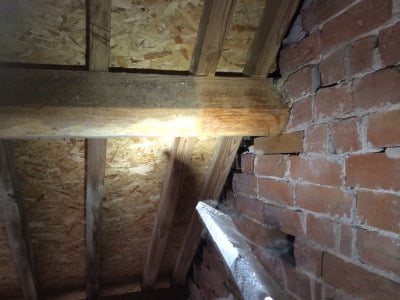Dry Ice Blasting sees Growth in Mould Removal Sector
Mould removal is a hazardous task that has to be approached with great care. Over the past 20 years we have carried out thousands of mould removal jobs, ranging from small bedroom cleans right up to HM Prisons.
In this time we have seen the coming and going of many ‘ground-breaking’ methods including biocides, fungicides and vaporisation. A lot of these methods are available for domestic use and this is where the problems start.
Removing mould is a skilled operation that can involve a lot more than spraying a chemical at a surface. It can involve building negative/positive air chambers. It can involve stripping the dry lining from walls to expose beams and rafters and it can involve days of monitoring air spore content. And this is because if you don’t get to the very source of the mould it will always come back.

In our 20 years of experience I have found the most clinical method to be dry ice blasting. This is because the extreme cold property of dry ice (-80°C) causes the mould to be eliminated on contact. The process of dry ice blasting also means that it is capable of gaining access to the ‘hard to reach’ places where other processes often fail. The blasting pressure also allows us to penetrate deeper into a surface substrate, added to the fact that removal with dry ice blasting is fast (up to 70% – 80% faster than any other method), then you can see why dry ice blasting has become our number one tool for mould remediation projects.
Mould removal is another growing sector for Optimum Dry Ice Blasting. The unusually mild and wet winters have contributed somewhat to that, but also the profile awareness of our sector with insurance companies has been a major factor in sales growth.
By Ian Reynolds



